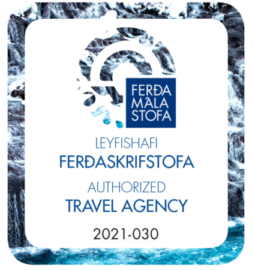Welcome to an exploration of the captivating world of volcano monitoring in Iceland. This Nordic island nation is renowned for its breathtaking volcanic landscapes and has a rich history of volcanic eruptions. In this blog post, we will delve into the significance of monitoring efforts for volcanoes in Iceland and the crucial role they play in predicting and mitigating volcanic hazards.

Activity of Volcanoes in Iceland
Geological Hotspot: The Mid-Atlantic Ridge
Activity of volcanoes in Iceland can be attributed to its location on the Mid-Atlantic Ridge. This underwater mountain range runs through the Atlantic Ocean, and Iceland straddles it. The ridge marks the boundary between the Eurasian and North American tectonic plates.
As these plates slowly move apart, magma rises to fill the gap, leading to volcanic activity.
Rift Zones and Fissure Eruptions
Within Iceland, the Mid-Atlantic Ridge manifests as rift zones. These are areas where the Earth’s crust is being pulled apart. As the crust fractures along these rifts, magma from the mantle wells up, creating spectacular fissure eruptions. These eruptions often produce long, linear cracks in the Earth’s surface, spewing lava fountains and creating new landforms.
Shield Volcanoes: Iceland’s Distinctive Landscape
The landscape of volcanoes in Iceland is dominated by shield volcanoes, a type of volcano characterized by broad, gentle slopes built up by successive layers of lava flows. These volcanoes are usually formed by the eruption of highly fluid basaltic lava, which spreads out over large areas.
They contribute to Iceland’s awe-inspiring scenery, with notable examples including Hekla, Krafla, and Eyjafjallajökull.
Subglacial Volcanoes and Volcanic Hazards
In addition to the prominent shield volcanoes, Iceland is also home to subglacial volcanoes. These volcanoes lie beneath the country’s vast ice caps, such as Vatnajökull and Langjökull.
When an eruption occurs beneath a glacier, it can lead to explosive interactions between the hot magma and ice, resulting in powerful ash plumes, jökulhlaups (glacial outburst floods), and lahars (mudflows). These hazards present unique challenges for volcano monitoring and hazard assessment.
History of volcanoes in Iceland and Notable Eruptions

Iceland has a rich history of volcanic eruptions, with records dating back centuries. Notable eruptions include the 1783-1784 Laki eruption, which released vast amounts of toxic gases and caused significant environmental and societal impacts in Iceland and beyond.
More recently, the 2010 eruption of Eyjafjallajökull garnered worldwide attention due to the disruption it caused to air travel in Europe. These eruptions serve as reminders of the dynamic and ever-changing nature of Iceland’s volcanic activity.
Monitoring Techniques for Volcanoes in Iceland
To understand and monitor Iceland’s volcanic activity, scientists employ a range of techniques. Seismic monitoring is a key tool involving the measurement of earthquake activity. By analyzing seismic waves, scientists can discern patterns that indicate volcanic unrest.
Gas measurements are also crucial, as changes in volcanic gases can provide valuable insights. Ground deformation measurements and thermal imaging help scientists identify signs of volcanic unrest by detecting changes in the shape and temperature of the land.
Eruption Precursors for Volcanoes in Iceland
Monitoring eruption precursors is a vital aspect of volcano monitoring in Iceland. Changes in seismic activity, such as an increase in earthquake frequency or intensity, often precede volcanic eruptions. Ground deformation, which occurs when a volcano swells or subsides, can also be a significant precursor to an eruption.
These telltale signs alert scientists to potential volcanic unrest and allow for timely responses.
Volcanic Gas Analysis
Volcanic gas analysis plays a crucial role in eruption prediction. Volcanoes emit various gases, including sulfur dioxide and carbon dioxide. Changes in gas emissions can indicate volcanic activity and provide crucial information for scientists.
By monitoring volcanic degassing, scientists can assess the hazards associated with gas releases and anticipate potential risks.
Monitoring Systems and Networks
To monitor volcanoes in Iceland comprehensively, a sophisticated network of monitoring systems is strategically placed across the country. Seismometers, GPS stations, and tiltmeters are just a few of the tools used to gather data.
These systems work in harmony to ensure early detection of volcanic activity and facilitate the development of effective early warning systems.
Predictive Modeling and Forecasting
Scientists employ predictive modeling and data analysis techniques to forecast volcanic eruptions. By studying historical data, applying statistical models, and conducting computer simulations, patterns, and trends can be identified.
These insights are invaluable for understanding volcanic behavior and improving eruption forecasting capabilities. Continuous research and advancements in modeling techniques contribute to the refinement of eruption predictions.
Mitigation and Preparedness for Volcanoes in Iceland

Volcanic hazards pose significant risks, but with effective mitigation measures and preparedness, the impact can be minimized. Volcano monitoring and eruption predictions form the backbone of early warning systems.
This allows authorities to implement evacuation plans and establish emergency response procedures in a timely manner. Collaboration between scientists, government agencies, and local communities plays a crucial role in enhancing preparedness and reducing vulnerability.
Conclusion
Volcano monitoring in Iceland is a fascinating field that merges scientific advancements with the protection of lives and property. By unraveling the complex details of activity of volcanoes in Iceland, scientists can predict eruptions and empower communities to take proactive measures.
Ongoing research and advancements in eruption forecasting techniques continue to enhance our understanding and preparedness. Explore further, stay informed, and marvel at Iceland’s captivating volcanic landscape, knowing that dedicated scientists are diligently working to keep us safe.


